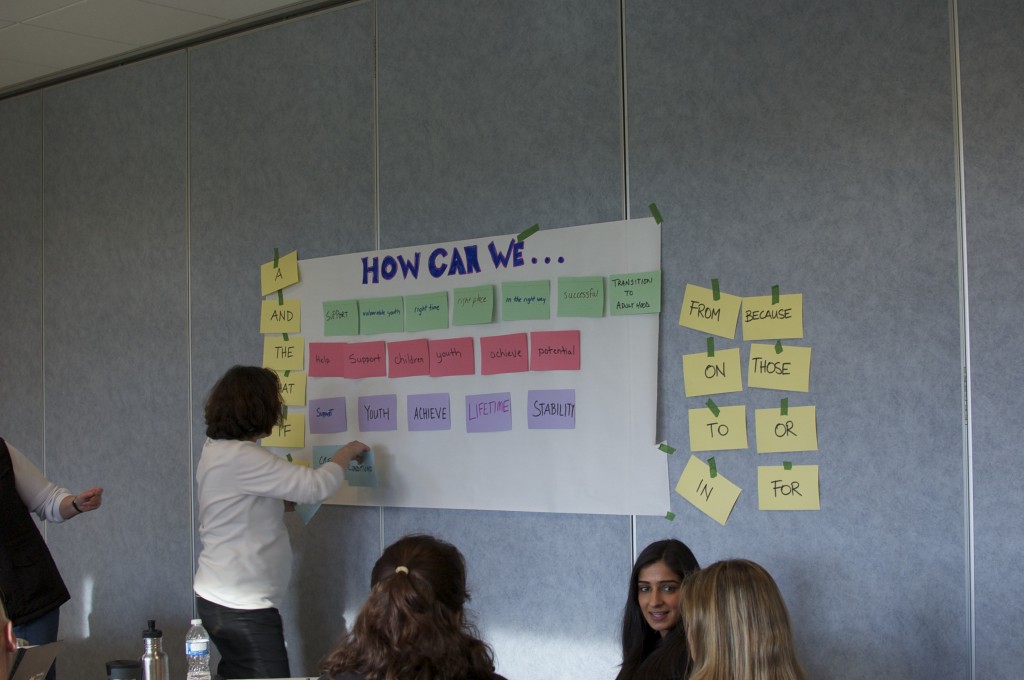This was the challenge I faced recently when I was asked to design and deliver a 2-day workshop that would be the starting point for a 2-year policy initiative. Undertaking what is essentially a drafting exercise with 25 people had the potential to get pretty ugly and really bogged down.
As I mulled over how to structure an exercise to get the group where it needed to go, I kept stumbling up against how to encourage creativity, keep people engaged and avoid the natural tendency for some voices to dominate the discussion. Further, what could I do to make it fun and dynamic? How could I get people out of their seats without causing chaos in a small room?
I have had great success leading groups to consensus using the Technology of Participation methods taught by ICA Associates. I have used their index card technique to help groups develop vision statements, identify operational issues and decide on the elements of implementation plans. I’d also been reading Gamestorming – a Playbook for Innovators, Rulebreakers and Changemakers. The authors of this great resource book see anything movable, like cards, as great “mobile artifacts” – something that carries meaning and can be moved around easily to introduce randomness; randomness is important because it drives creativity by tricking the mind into looking for new and different patterns.
All that got me thinking – I figured that using cards would increase the chances for everyone to participate and would create ideas that could be shuffled, regrouped, and leveraged to drive to consensus in 60 minutes. Here’s what I did:
Step 1: In small groups of 4-5 participants, individuals reflected on information that was presented earlier in the day and then shared their ideas about the common themes or essential elements of the policy challenge at hand.
Step 2: After a short discussion, each table created their first cut at a question to describe the end state they wanted to create through their policy work. The question had to begin with: “How can we…” Groups were encouraged to do this quickly and NOT to seek perfection.
Step 3: Once happy with what they had developed, they put boxes around the main elements or blocks of meaning in the draft question eliminating the conjunctions, pronouns, prepositions and articles.
Step 4: Each element block was then placed on one or two coloured index cards and placed on a blank mural posted on a wall.
 These 4 steps took about 20 minutes to complete and produced 4 rough outlines of the draft question.
These 4 steps took about 20 minutes to complete and produced 4 rough outlines of the draft question.
Step 5: Silently, participants looked at each question, and its elements, and thought about their different meanings. When ready, anyone could step forward and take elements from each question to begin creating one new question. As each element was moved and placed, the person moving the card explained their rationale to the group. If others disagreed, they could make a counter move and explain why.
Step 6: The draft question was reviewed and confirmed. Times up – done in 60 minutes or so.
We came back to this initial question several times over the course of the 2-day workshop and continued to make adjustments as our understanding of the issues deepened. The draft question was left on cards so that the group was able to add new cards and shuffle ideas around to clarify its meaning and focus
By the end of the workshop, the group had a strong question to take forward that everyone in the group felt they owned.







